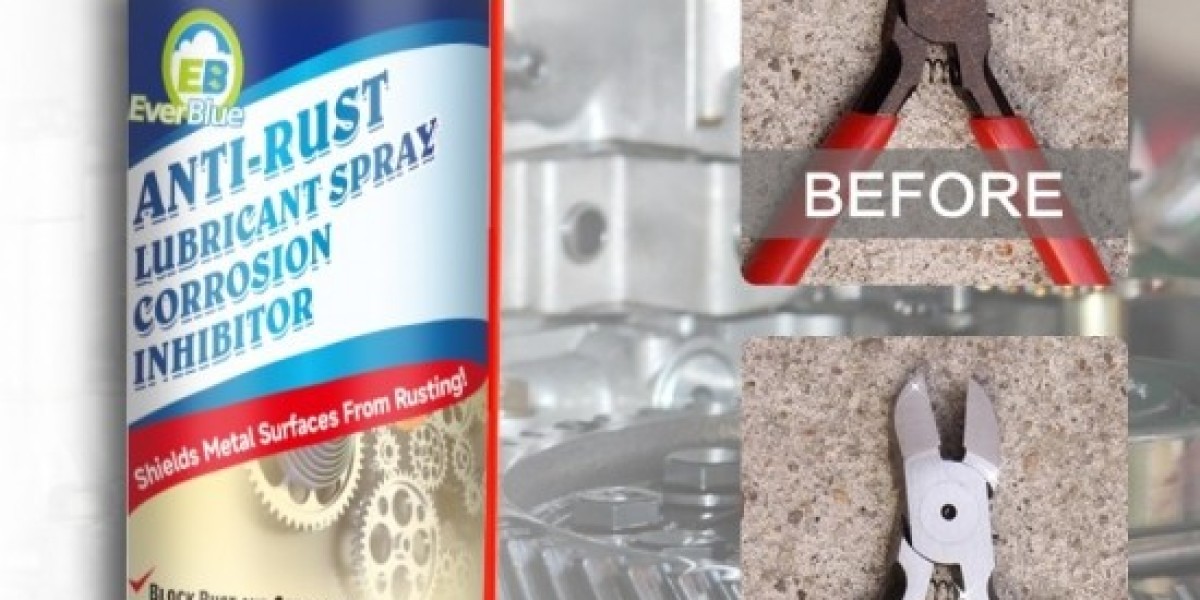Introduction
When two different metal substances come in contact with each other in the presence of air and moisture, an electrochemical reaction takes place which results in the formation of rust. Rust is basically iron oxides, mostly iron(III) oxide Fe2O3, which is formed by the reaction of iron and oxygen in the presence of water. This chemical reaction transforms the solid pure metal into a brittle red-colored porous material called rust. The rust formation reaction accelerates in the presence of water and oxygen as these two are electrochemical oxidizing agents that cause the iron to corrode.
Types of Rust and Factors Affecting its Formation
There are three main types of rust -
1. Red Rust: The most common type of rust is red rust which has the chemical formula Fe2O3. It is flaky and brittle in nature.
2. Black Rust: Black rust is scientifically known as magnetite with the formula Fe3O4. This type of rust develops below red rust and helps protect iron from further corrosion. However, it is porous and can allow water to seep in leading to more rusting over time.
3. White Rust: Also known as basic iron carbonate, white rust has a chemical formula of Fe2(OH)2CO3. It appears as a white powdery substance and indicates that the corrosion process is still ongoing.
Some key factors that accelerate the rust formation process are - moisture, oxygen, sulfur/chlorine content in air, surface contaminants, aggressive acids or industrial pollutants present, porosity of metal, temperature and relative humidity levels. Ferrous or iron-based metals are most susceptible to rusting.
Rust Lubrication Need
Once rust forms, it continues to spread inward and outward if not contained. This can weaken the structural integrity of metal parts and components. To inhibit rust formation and stop further corrosive reactions, rust lubricants play a crucial protective role. Some key benefits of using rust lubricants are -
- Acts as a physical barrier to isolate the metal surface from oxygen and moisture in air. This stops active rust formation.
- Lubricating films make it difficult for water vapor and gas molecules to reach the metal interface and initiate new oxidation reactions.
- Provides long-term corrosion protection even on scratched or cut surfaces as the oils/waxes fill in any pores or gaps in metal substrates.
- Lubricating films self-heal over small cuts or scratches to maintain an intact barrier against environmental elements.
- Displaces any moisture trapped under earlier layers of rust conversion/protection coatings to further plug corrosion pathways.
- Extends the functional lifetime and performance reliability of metal tools, components and structures by preventing rust damage over prolonged usage.
- Keeps metal parts functional for applications that involve storage in humid conditions, exposure to salt or industrial atmospheres prone to accelerated corrosion.
- Rust lubricants also impart water-repellent and moisture-displacing properties vital for marine, off-shore, mining and similar heavy-duty outdoor equipment.
- Makes it easier to remove existing rust layers through lubricated wire brushing or other mechanical methods without further damaging metal parts.
- Provides cost-effective rust prevention compared to more complex and multi-step rust-proofing techniques like metal plating, painting etc.
Types of Rust Lubricants and their Working Mechanisms
Common types of commercial lubricants work on various protective mechanisms to form barriers against the environment:
Oil-Based Lubricants:
Mineral oils are a basic type of lubricant that leaves behind an oily film on metal. The non-polar oil molecules displace water from the metal surface through displacement and repel additional water vapor/oxygen molecules through its hydrophobic properties. Lightweight oils penetrated rust interfaces better than heavier ones.
Wax-Based Lubricants:
Solid waxes like beeswax, carnauba wax fill pores and cavities in rust and metal. They produce tough, long-lasting hydrophobic barriers. Certain waxes contain rust-inhibiting chemicals that also offer contact protection.
Silicone-Based Lubricants:
High-temperature and UV-resistant silicone greases, oils and sprays work on similar principles as hydrocarbons but yield stronger moisture-repellent films resistant to weathering. Some silicones may penetrate tight rust interfaces deeper.
Lanolin-Based Lubricants:
Lubricants made from lanolin lipids from sheep's wool are very effective rust-barrier films due to their natural rust-inhibiting molecules. Being a water-resistant wax, lanolins penetrate rust deeper than oils whilerepelling future corrosion.
PTFE-Based Dry Lubricants:
Dry lubricating pastes, wipes or aerosols containing PTFE (Teflon) form non-stick barriers on metal that repel liquids, oils and rust formation over the long run through their low-surface energy properties.
Grease-Based Rust Lubricants:
Heavy-duty lithium, calcium or aluminium complex greases actively displace moisture from rust interfaces while leaving behind thicker protective barriers than oils or waxes alone. When mixed with rust-inhibiting chemicals, they deliver multi-layered protection.
Therefore, choosing the right lubricant based on the metal type, rust severity/porosity, ambient conditions and needed protection duration is critical for achieving optimal long-term corrosion resistance performance. Products combining film-forming oils/waxes with rust-inhibiting chemicals generally work best. Conventional solid film rust converters can also create a tightly adherent foundation below topical lubricants for further enhancing overall anti-rust qualities. Regular reapplication as per manufacturer guidelines sustains whole-life rust prevention.
Applications of Rust Lubricants
Lubricants are commonly used across various industries and settings for protecting ferrous parts and metal installations exposed to corrosive conditions:
- Automotive: To lubricate engine/chassis components, tools and chrome or alloy wheels prone to brake dust corrosion.
- Marine: For keeping boat hardware and anchor chains rust-free when submerged in saltwater or stored in humid marine environments.
- Industrial Machinery: Used on factory metalworking tools/dies, machinery, tubes/piping susceptible to rusting from moisture, pollutants or metalworking fluids/coolants.
- Infrastructure: Applications for bridges, metallic roofs, building façades, fences as a cost-effective solution versus more complex paint systems.
- Agricultural Equipment: Prevents rusting of farming tools, tractor equipment, machinery exposed to outdoor elements over long service periods.
- DIY/Hand Tools: Homeowners use lubricants for protection of mowers, bicycles, ladders and non-powered hand tools put away










